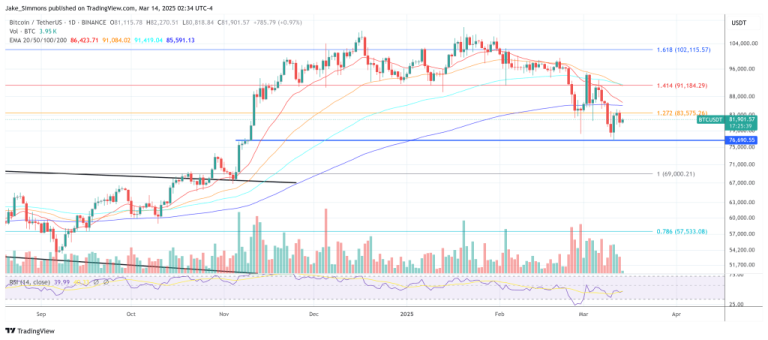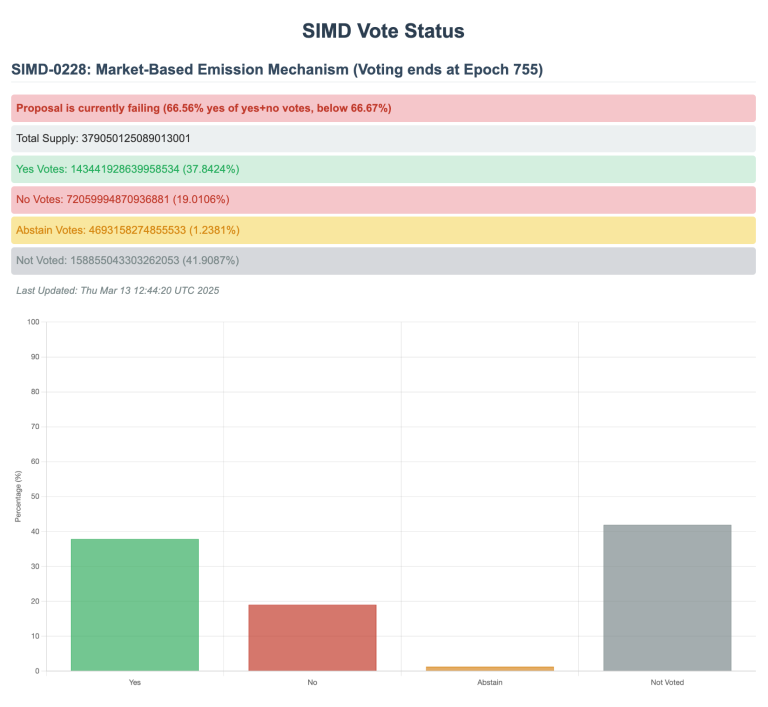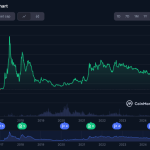ASIC chips are the backbone of the bitcoin mining industry, designed specifically to solve Bitcoin’s SHA-256 algorithm quickly to earn block rewards.
One of the most popular ASIC machines, the Antminer S19, can perform 82 trillion computations per second, dominating the $30 billion ASIC manufacturing market, primarily led by Bitmain, powering about 80% of Bitcoin’s hashrate.
However, Bitdeer, a Singapore-based bitcoin mining firm, plans to introduce a new ASIC chip architecture that promises increased efficiency and transparency in the manufacturing process.
Bitdeer aims to provide customers with more information about their chip designs, production cycles, and future plans, unlike the current dominant players Bitmain and MicroBT, who are known for their lack of transparency.
Increasing visibility into ASIC production could help miners plan hardware shipments better and predict Bitcoin’s difficulty growth more accurately, according to industry experts.
Bitdeer is working on creating a new ASIC chip architecture to achieve greater efficiency, aiming for less than 10 J/TH in power efficiency, a significant improvement from the current industry standards.
Bitdeer’s recent product, the SEALMINER A3, achieved a power efficiency of 9.7 J/TH, and the upcoming SEALMINER A4 is expected to consume only 5 J/TH, making it one of the most efficient ASIC machines on the market.
The company has cracked the code for high-performance applications, recycling electric charge on chips multiple times to achieve a 75-80% improvement in efficiency, which will be implemented in their upcoming A4 chips.
Manufacturing ASICs is complex, requiring significant research and engineering efforts. Bitdeer invests millions of dollars in research each quarter and has a team of top engineers in Singapore and Silicon Valley working on new chip designs.
They plan to release the A4 chip in late-2025 or early 2026, following the successful launch of previous models like the A1 and A2.
Once a new chip design is finalized, Bitdeer partners with TSMC for the manufacturing process.
Not only is the Taiwanese firm the largest chip manufacturer in the world, it’s also the most advanced on a technological level, which makes Bitdeer’s partnership with it crucial.
“You can’t just go to TSMC and say, ‘Hey, I want 100 exahash worth of chips in the next three months.’ There’s a process for going through that,” LaBerge said. “You go in and ask them for chip allocation, and they’ll give that based on priority.”
Once it has the plans in hand, TSMC produces a mask, which essentially functions as a template for chips — like the platen in a printing press. The mask is sent to Bitdeer alongside risk chips (a small batch of chips that the company can use for trials) to make sure the design works properly. If the firm needs any alterations to be made to the design, that’s when it happens. In that case, TSMC makes corrections based on Bitdeer’s feedback and sends over a new mask with new risk chips. All of this happens at significant cost. Bitdeer spent $14 million on the A2’s tape-out and $26 million on the A3’s.
When Bitdeer is satisfied with a design, TSMC uses the mask to mass-produce wafers. LaBerge compared wafers to sheets, each containing hundreds of chips. Technically, a mask can be used to create an almost unlimited number of wafers, but TSMC has finite resources and can only produce a certain number of chips, so firms end up competing for them.
One of the advantages of the A4’s design, according to LaBerge, is that it’s supposed to make the firm’s chip allocation process easier. “[Basit] challenged the team to come up with a new architecture that didn’t need to undergo TSMC’s latest processes, but could step back a couple of generations, which would allow us to use a node that is much less in demand,” he said. A semiconductor node is basically a specific version of the firm’s chip manufacturing technology; TSMC is constantly building new nodes in an effort to refine its processes.
It takes roughly three months for Bitdeer to receive its mask and risk chips after first submitting its design to TSMC. Then, it’s another three or four months for the company to receive its chips once it has given the foundry the green light for mass production. The chips are sent straight to Bitdeer’s manufacturing facilities in Asia. From there, it can take four to eight weeks for the mining rigs to be fully built and packaged.
Aiming for the top
Despite all the costs incurred during production, some of the capital required for manufacturing ASICs comes from Bitdeer’s customers.
Miners interested in purchasing Bitdeer’s ASICs typically put down a deposit of 25% to 50% of the total cost of the order. The production cycle tends to average at six to seven months, so it doesn’t take long for the company to recuperate its funds and make a profit.
Building ASICs also creates advantages for Bitdeer’s own mining operations. Up until recently the firm, which was founded in 2021, focused on the hosting business, meaning that it provided facilities for other bitcoin miners to place their rigs. Bitdeer is slowly transitioning out of that model and expanding its own mining operations alongside its ASIC manufacturing arm.
The acquisition of ASICs is typically the most expensive part of building up a bitcoin mining operation. These machines usually only last around three or four years before newer models make them obsolete, so bitcoin mining firms are constantly looking to acquire more.
Not only is Bitdeer able to considerably reduce these costs by producing its own machines, but it also has the option of selling its mining rigs to other firms depending on its needs.
Down the line, Bitdeer aims to give Bitmain and MicroBT a run for their money, and disrupt what LaBerge called the duopoly of the ASIC market. “We want to be the top player in the market, absolutely,” LaBerge said. “We believe we have the team and the technology to do that.”









